Introduction of 10 Ways to be Physically Fit
In the pursuit of a healthier and more vibrant life, achieving physical fitness stands as a cornerstone. “10 Ways to Be Physically Fit” unravels the simplicity behind this goal, presenting actionable tips that transcend the complexities of fitness routines. Delve into the essentials of crafting your personalized workout schedule, cultivating lasting healthy habits, and embracing a lifestyle that promotes both physical and mental well-being. Let’s embark on this journey together, exploring ten practical strategies that not only promise a fitter you but also promise a more invigorating and fulfilled life. Get ready to unlock the door to vitality and discover how simple choices can lead to profound changes.
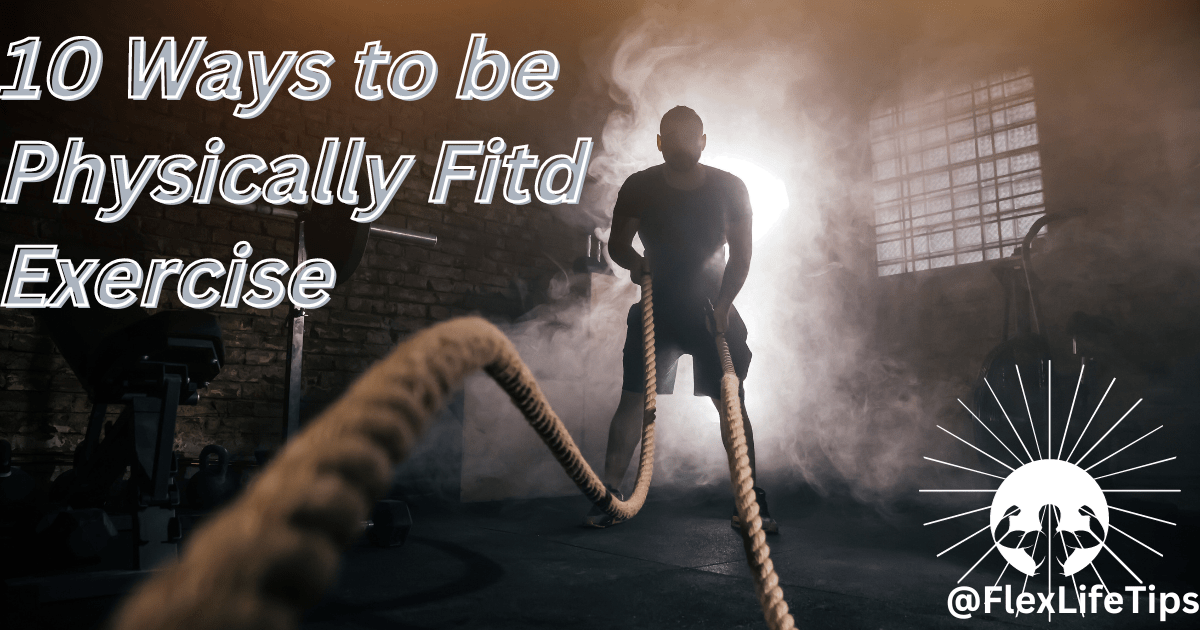
Creating a Fitness Routine
Physical fitness is not just a destination; it’s a journey shaped by consistent effort and intentional choices.Creating a fitness routine that’s just for you gives you the power to steer your own well-being. This section walks you through the steps to shape a routine that fits your lifestyle, making sure that staying active is not only sustainable but also something you genuinely enjoy in your day-to-day life.
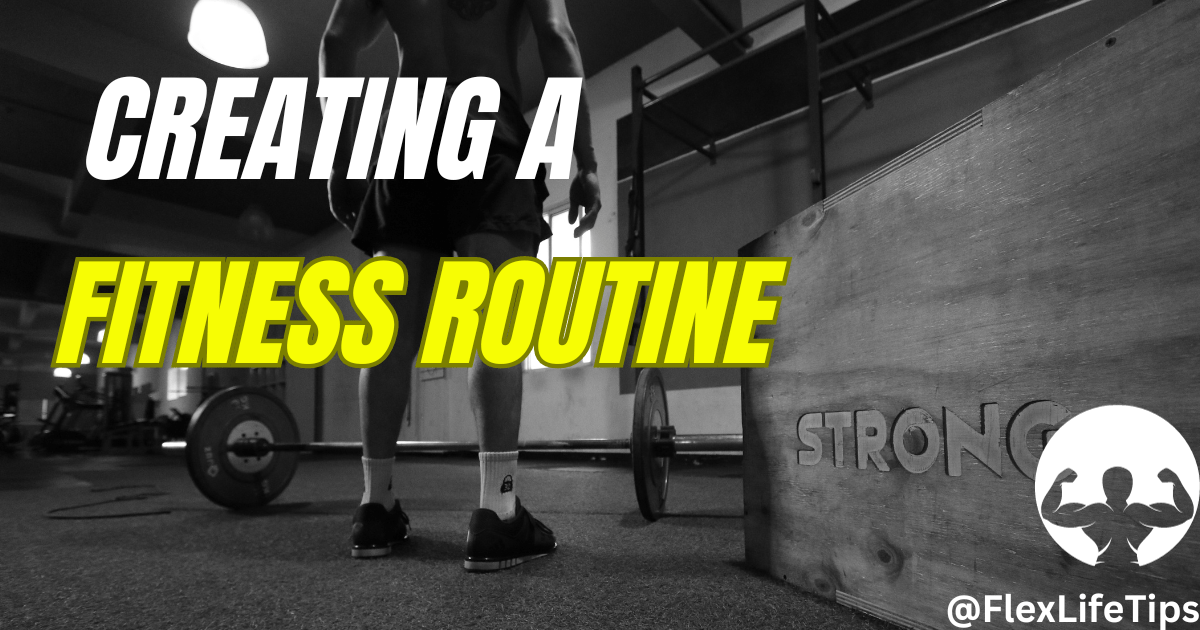
Crafting a Personalized Workout Schedule
In a world brimming with obligations, finding time for exercise can be challenging. However, carving out dedicated slots for physical activity is crucial for long-term health. Begin by assessing your daily schedule and identifying pockets of time that can be allocated to fitness.Whether it’s a refreshing morning stroll, a midday workout, or an evening session, pick a time that syncs with your energy levels and schedule.
Think about the kind of exercise you find enjoyable, whether it’s cardio, strength training, or flexibility exercises.Tailor your routine to include activities that resonate with you, increasing the likelihood of adherence. Consistency is key, so aim for a realistic frequency, whether it’s daily, several times a week, or whatever fits into your lifestyle.
10 Tips for Physical Fitness
Starting your journey to physical fitness doesn’t demand a total transformation; frequently, small changes to your daily routine can bring about significant results. Let’s delve into ten practical tips that act as the foundation for a healthier and more active lifestyle.
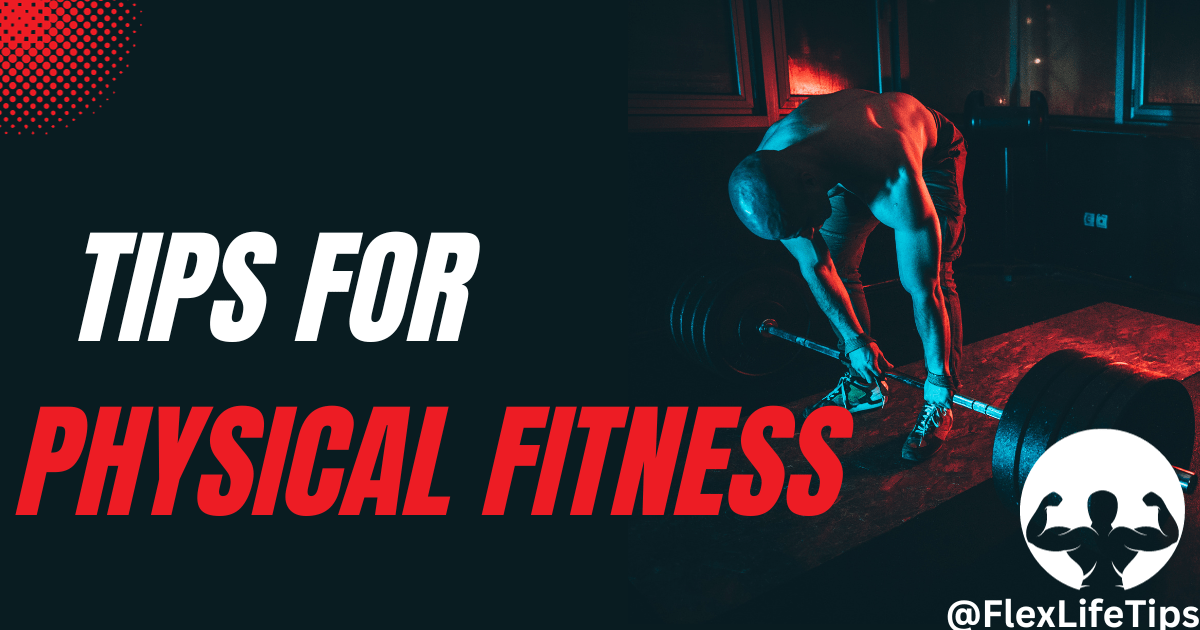
1. Stay Active
Physical activity need not be daunting. Incorporate movement into your daily life by opting for stairs over elevators, taking short walks during breaks, or enjoying outdoor activities. Consistent movement boosts energy, enhances mood, and contributes to overall well-being.
2. Maintain a Balanced Diet
Fuel your body with a diverse range of nutrients. Include a colorful array of fruits, vegetables, lean proteins, and whole grains in your diet. Moderation is key, and a balanced diet supports energy levels, aids in recovery, and promotes optimal functioning of your body.
3. Ensure Proper Hydration
Water is like your body’s best companion. Making sure you stay well-hydrated is crucial for processes like digestion, circulation, and temperature regulation. Cultivate the habit of drinking water consistently throughout the day, especially when engaging in physical activity and afterward.
4. Prioritize Quality Sleep
The significance of quality sleep cannot be overstated. Aim for 7-9 hours of uninterrupted sleep each night. Quality rest enhances muscle recovery, cognitive function, and overall resilience.
5. Limit Alcohol and Avoid Smoking
Excessive alcohol intake and smoking can undermine your fitness goals. Limit alcohol consumption and quit smoking to protect your respiratory and cardiovascular health, paving the way for improved fitness.
6. Regular Health Check-ups
Monitoring your health is a proactive approach to fitness. Schedule regular check-ups to assess key indicators such as blood pressure, cholesterol levels, and overall wellness. Early detection of potential issues allows for timely interventions.
7. Effective Stress Management
Stress can hinder your fitness journey. Explore stress-relieving activities such as meditation, deep breathing, or engaging in hobbies to foster mental resilience. A calm mind complements a healthy body.
8. Maintain a Healthy Weight
Strive for a weight that aligns with your body’s needs. Sustainable weight management involves a combination of healthy eating, regular exercise, and mindful lifestyle choices.
9. Prioritize Mental Health
Physical fitness and mental health go hand in hand. Take care of your emotional well-being by reaching out for support when necessary, showing kindness to yourself, and including activities that bring joy and fulfillment into your life.
10. Benefit from Regular Sunlight
Natural sunlight provides essential Vitamin D, crucial for bone health and immune function. Spend time outdoors regularly, and if needed, consider Vitamin D supplements under the guidance of a healthcare professional.
Embrace these ten tips as pillars supporting your journey to physical fitness. Small, consistent actions compound over time, leading to a more vibrant and resilient version of yourself. The road to fitness is not about perfection but about progress and the commitment to nurturing your body and mind.
B. Establishing Healthy Habits for Life
Beyond structured workouts, cultivating healthy habits contributes significantly to overall fitness. This includes simple yet impactful practices such as:
- Stay Hydrated: Make sure to drink enough water throughout the day to support your body’s functions and recovery.
- Nutrition: Embrace a balanced diet rich in nutrients, incorporating a variety of fruits, vegetables, lean proteins, and whole grains.
- Rest and Recovery: Ensure you prioritize getting sufficient rest between workouts, allowing your body the necessary time to heal and grow stronger.
- Stress Management: Blend stress-reducing activities, such as meditation or mindfulness, into your routine to nurture your mental well-being.
- Quality Sleep: Strive for 7-9 hours of restful sleep each night, recognizing its crucial role in physical recovery and overall health.
By incorporating these habits into your daily life, you’ll be reinforcing the foundation of your fitness journey. This section empowers you to design a fitness routine that aligns with your lifestyle and sets the stage for sustainable health and vitality. Remember, the key is not just to move but to move with purpose, creating a routine that supports and enhances your well-being.
In-Depth Insights into Physical Health
Moving beyond simple daily tips, understanding how certain lifestyle choices profoundly impact physical health can be a game-changer. Let’s explore how regular exercise, a balanced diet, hydration, quality sleep, and stress management contribute to your overall well-being.
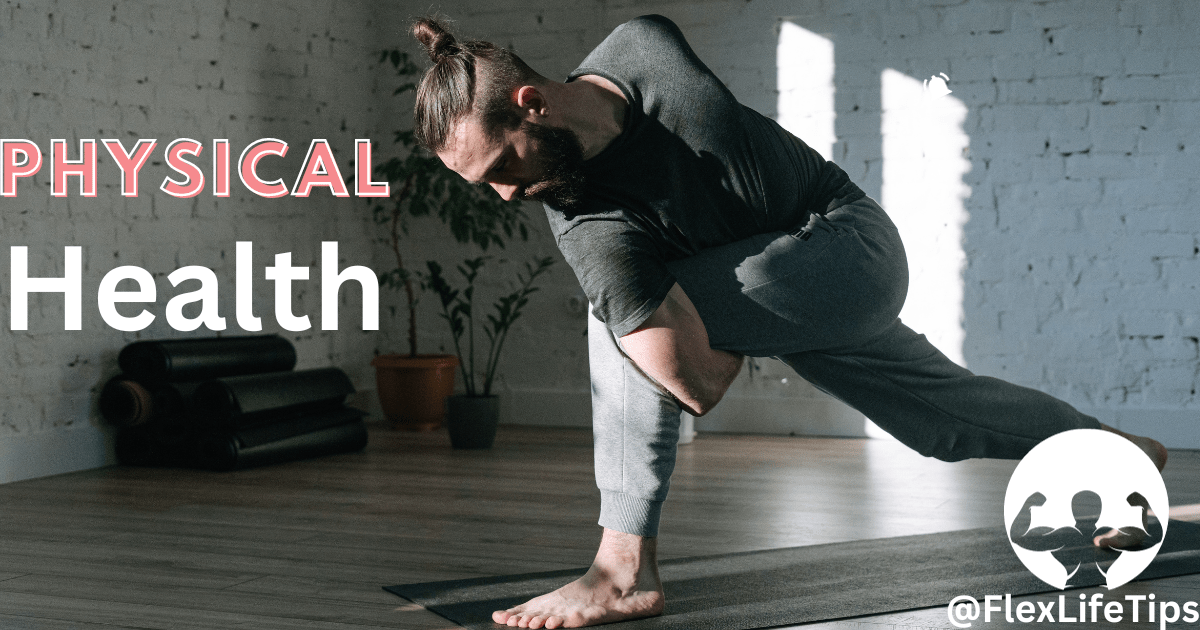
1. Impact of Regular Exercise on Physical Health
Exercise goes beyond calorie burning; it’s a potent catalyst for holistic well-being.Engaging in regular physical activity boosts cardiovascular health, strengthens muscles and bones, and enhances overall circulation. Additionally, exercise stimulates the release of endorphins, the body’s natural mood lifters, contributing to improved mental well-being.
2. Role of a Balanced Diet in Improving Physical Health
Your body functions like a finely tuned machine, requiring a diverse range of nutrients to operate optimally. Maintaining a balanced diet not only provides the necessary fuel for your daily activities but also plays a crucial role in aiding recovery after exercise. Foods rich in nutrients support muscle growth, enhance energy levels, and strengthen your immune system, establishing a robust foundation for physical health.
3. Significance of Staying Hydrated for Physical Well-being
Water is the unsung hero of good health. Adequate hydration is crucial for nutrient transportation, temperature regulation, and joint lubrication. Whether you’re engaged in intense workouts or daily tasks, staying hydrated ensures your body operates at its best.
4. Connection Between Quality Sleep and Physical Health
Quality sleep is a cornerstone of optimal health. During sleep, your body undergoes essential repairs, from muscle recovery to memory consolidation. Prioritizing sufficient and restful sleep contributes not only to physical recovery but also to mental acuity and emotional resilience.
4. Managing Stress for Overall Physical Well-being
Stress isn’t just a mental burden; it manifests physically, affecting various bodily systems.Persistent stress can contribute to inflammation, cardiovascular issues, and a compromised immune system. Including stress management practices, like meditation or mindfulness activities, becomes crucial for maintaining overall physical health.
Recognizing these connections empowers you to make informed choices for your well-being.The simplicity of daily tips harmonizes with the complexity of how these practices synergize to create a robust foundation for a healthier and more fulfilling life. Embrace these insights as your guide to not just looking fit but truly being physically and mentally resilient.
Exercising Without Gym Access
Exercise shouldn’t be confined to the walls of a gym. In fact, various enjoyable and effective workouts can be seamlessly integrated into your daily routine, irrespective of your location. Let’s explore why exercise matters and discover a diverse range of activities that can be your passport to fitness, without the need for a gym membership.
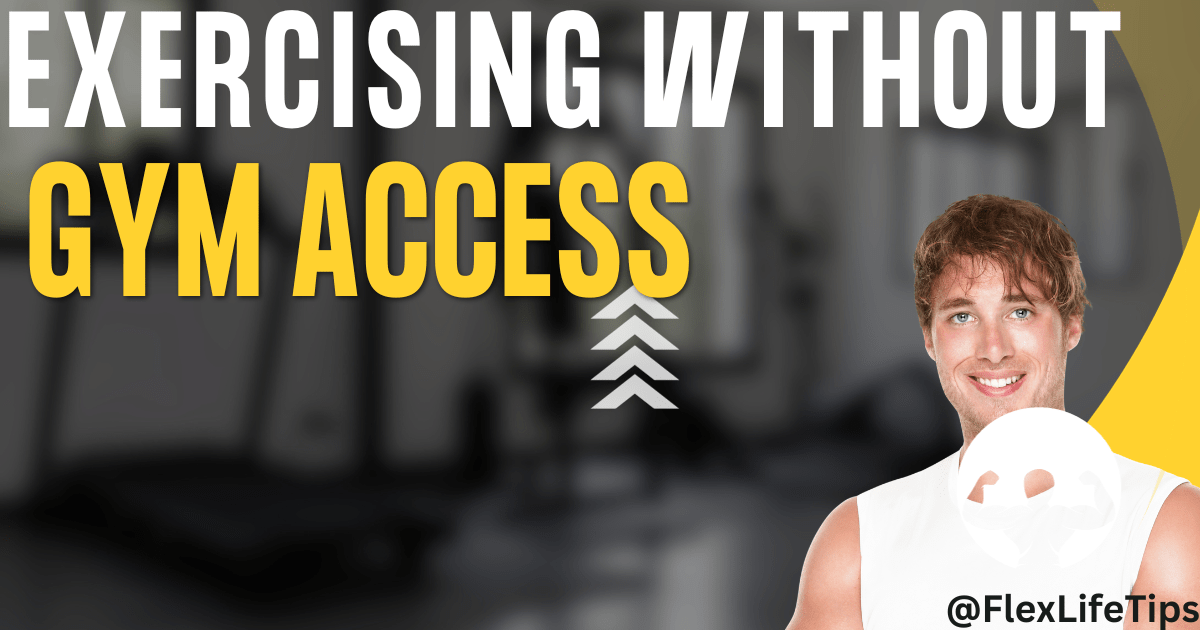
1. Understanding the Benefits of Exercise
Exercise is not solely about sculpting your physique; it’s a holistic investment in your health. Engaging in regular physical activity improves cardiovascular health, uplifts mood, and increases energy levels. It’s a crucial element in weight management and plays a pivotal role in preventing various chronic diseases.
2. Varied Ways to Exercise at Home
- Walking: A simple yet powerful exercise. Incorporate brisk walks into your routine, whether it’s around your neighborhood or during work breaks.
- Stair Climbing: An accessible way to elevate your heart rate and strengthen leg muscles. Opt for stairs instead of elevators whenever possible.
- Bodyweight Exercises: No fancy equipment needed. Exercises like squats, lunges, and push-ups utilize your body weight for resistance.
- Incorporating Wall Sits: An effective way to build strength in your lower body without any equipment.
- Couch Potato Exercises: Transform TV time into an opportunity for movement. Engage in simple exercises while watching your favorite shows.
- Home-based Boxing: A fun and high-intensity workout that requires minimal space. Shadowboxing or using a punching bag can be exhilarating.
- Dancing for Fitness: Turn up the music and dance your way to fitness. It’s not only a great workout but also a stress buster.
- Yoga Practices: Enhance flexibility, balance, and mindfulness with various yoga poses. Many resources offer online classes for all skill levels.
- Barre Workouts: Combine elements of ballet, Pilates, and yoga to tone muscles and improve posture.
- Meditation Techniques: While not a traditional exercise, meditation contributes to overall well-being by reducing stress and promoting mental clarity.
3. Overcoming Excuses for a Sedentary Lifestyle
Life is busy, and finding time for exercise can be challenging. However, acknowledging common excuses—such as lack of time, motivation, or suitable space—and finding creative solutions can pave the way for a more active lifestyle.
Exploring these alternatives not only breaks the monotony of traditional workouts but also helps you find activities that resonate with your preferences. The aim isn’t just to exercise but to discover joy and sustainability in movement, making fitness a natural part of your daily life, irrespective of gym access. Remember, there are numerous ways to stay active, and the most effective workout is the one you enjoy and can consistently weave into your routine.
FAQs
Here are (FAQs) about “10 Ways to Be Physically Fit“:
1. Q: What does it mean to be physically fit?
A: Physical fitness encompasses a state of well-being achieved through regular exercise, a balanced diet, and healthy lifestyle choices. It involves the optimal functioning of the body and mind.
2. Q: How can I create a personalized workout schedule?
A: Crafting a workout schedule involves assessing your daily routine, identifying suitable time slots, and choosing activities you enjoy. It’s about finding a balance that aligns with your lifestyle.
3. Q: Why is hydration emphasized in physical fitness?
A: Staying hydrated is crucial for various bodily functions, including nutrient transportation, temperature regulation, and joint lubrication. It supports overall well-being, especially during physical activity.
4. Q: What role does quality sleep play in physical health?
A:Getting quality sleep is like a secret weapon for your body—it’s essential for recovering physically, growing your muscles, and keeping your overall health in check. Not only does it sharpen your thinking skills, but it also boosts your emotional well-being and strengthens your body’s ability to bounce back.
5. Q: How can stress management impact physical fitness?
A: Chronic stress can negatively affect physical health. Adding stress management practices, like meditation or deep breathing, is like giving your well-being a helping hand. It’s crucial for keeping everything in balance and looking after your overall health.
6. Q: Can I be physically fit without going to the gym?
A: Absolutely! There are numerous ways to stay active without a gym, including walking, bodyweight exercises, home-based workouts, and outdoor activities. The key is finding activities you enjoy.
7. Q: Why is eating a balanced diet important for staying physically fit?
A: A balanced diet provides essential nutrients that support energy levels, muscle growth, and immune function. It’s like fuel for your daily activities and helps your body bounce back after exercise.
8. Q: What are some practical tips for maintaining a healthy weight?
A: Sustainable weight management involves a combination of healthy eating, regular exercise, and mindful lifestyle choices. It’s about finding a balance that suits your individual needs.
9. Q: How does exercise contribute to mental health?
A: Exercise releases endorphins, which are natural mood lifters. Regular physical activity is linked to reduced stress, improved mood, and enhanced cognitive function, positively impacting mental health.
10. Q: Can I start a fitness journey if I’m a beginner?
A: Absolutely! Starting small and gradually increasing intensity is key. Whether you’re a beginner or returning after a break, consistency and finding activities you enjoy are crucial for long-term success.
Conclusion
In conclusion, embracing a physically fit lifestyle involves incorporating a holistic approach to well-being. From regular exercise routines and a balanced diet to adequate hydration, quality sleep, and stress management, these interconnected elements form the foundation of a healthy and active life. The key lies not just in the mechanics of movement but in the purpose and joy derived from it. By making conscious choices and cultivating sustainable habits, anyone can embark on a journey toward physical fitness that aligns with their individual preferences and ultimately contributes to a vibrant and resilient well-being.